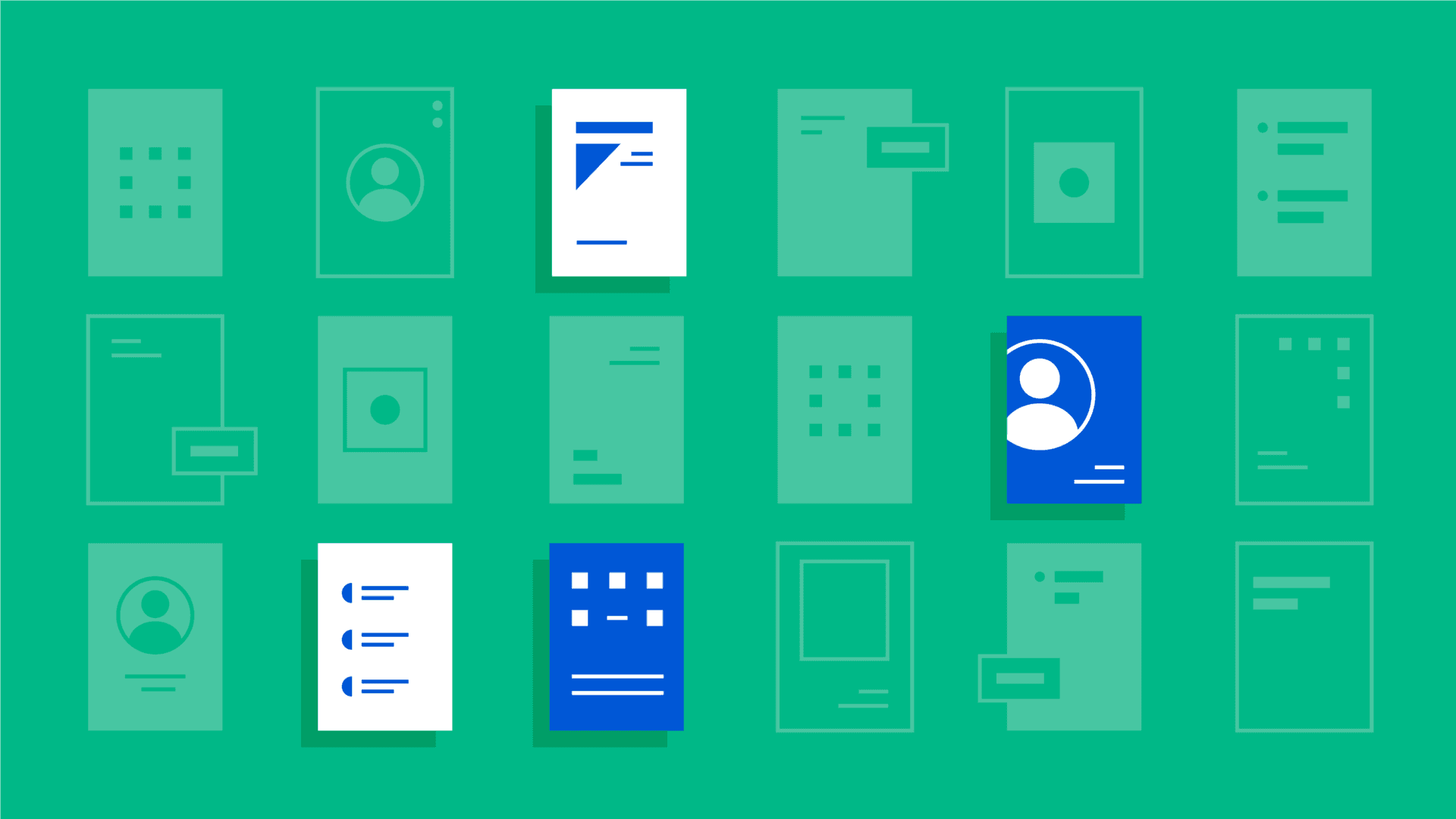No matter what the job market looks like, a strong UX portfolio is the most important part of a designer’s job application. (The second most important thing is the interview.) This is good news because your portfolio is a part of the hiring process you control. You can be confident that the effort you put into improving it is time well spent.
That’s the first of several lessons I learned when I asked half a dozen Indeed UX managers for their advice to designers working on their portfolios. Collectively, they’ve reviewed thousands of applications and have a strong sense of what works. Here are their tips for making your UX portfolio the best it can be. And once you’ve absorbed these, take a look at our article on the art of storytelling for case studies.
Take your portfolio seriously — it’s the most important part of your application
Annie Jarvis, Senior UX Director “The portfolio is king. Work experience is important. I don’t think a degree is as important.”
Anna Rowe, Senior UX Director “If I wanted to prepare myself as a candidate, my focus would be on having a really solid portfolio. It’s the best way to tell the story of your work and the impact you’ve had.”
Matthew Nesbitt, UX Design Manager “People learn in all sorts of ways. A formal degree in design or user experience is great because it shows you’ve put in the time to get a deep understanding of theory and practice. But a portfolio is how I’m going to learn more about you and what you’ve been able to achieve.”
–
Is this article helpful? Subscribe to get occasional emails about new articles.
–
Tell a full story in your portfolio pieces
Susan Le, UX Director “I look for depth and breadth. I like to see project overviews summarizing the problem statement, process, team makeup, and the candidate’s role on the team. It’s a red flag when all I see are final mockups with no understanding of how the candidate arrived at that solution.”
Matthew “Tell a story. People like to be entertained and hiring managers are no different. What was the conflict? What was the resolution? Talk about the progress from phase to phase. This is a great way of expressing the constraints and challenges that come with any project.
Corey Chandler, UX Design Manager “The journey is actually the most important part. The portfolio should show your design process clearly and concisely. It may be tempting to highlight a really cool pet project of yours, but I would rather see a smaller product that actually shipped. Concept projects aren’t subjected to the same trials and tribulations that shipped products undergo. How designers weather those challenges and come through them is more interesting than blue-sky thinking in a bubble.”
Rhonda Gilligan, UX Design Manager “Here’s what I recommend to candidates: Focus on the user problem to be solved. Show us the ‘before’ if there was one. Tell us how you knew there was a problem using feedback, testing, or data rather than explanations like ‘the product manager said so’. Then take us through how you designed a solution. Show us examples of artifacts and deliverables like journey maps, audits, sketches, wireframes, mocks, and prototypes. Explain the testing you did to validate your design and show us how you iterated based on the results. Prove the success of the finished product with metrics showing it solved the initial user problem.”
Annie “I’m always looking for a project or two that shows iterative design based on feedback. I want to see that you, or someone else, got feedback on a design and then digested that feedback and made improvements. Ideally, it’s impactful work that shipped and is beautiful.”
Design your portfolio to highlight your strengths
Matthew “The portfolio is more than proof that you’ve done the work. It’s also a way to present yourself to us in your best light — what’s your superpower?”
Annie “As I review a portfolio, I’m trying to identify the candidate’s potential strengths. It could be coding, complex interactive design, visual design, or something else.”
Susan “If a candidate has formal training or experience, I like to see their range of experience with various design processes. If they’re new to the field, I look for previous experience and skills that may be transferable, like the ability to problem-solve within constraints and using empathy to understand problems.”
Don’t skip the final polish
Annie “The first thing I ask myself is, does the portfolio look modern?”
Susan “Sweat the details and make it look put together and thought through. Double-check for typos, grammatical errors, proper alignment of elements, and so on.”
Matthew “Ask a friend or someone you respect for their honest opinion. Get feedback from people who can evaluate it in the same way as hiring managers would.”
Corey “At my last job, I often sat down to review an application only to find that the portfolio was password-protected. That meant an extra back and forth with the candidate. Meanwhile, I would move forward with other candidates. If work is sensitive and can’t be public, make sure to include your portfolio password with your application.”
Consider all options to fill your portfolio if you’re an entry-level designer
Annie “If no one will hire you to work on their projects, create your own. Help small business owners or nonprofits with your UX skills. The more real experience you have, the easier it is for employers to figure out if you can do the job. If you don’t have any experience, employers are making a much bigger guess based on skills and aptitude alone. Employers can be much better matchmakers when looking at real-world experience.”
Matthew “Go back through past design challenges or prompts from classes you’ve taken. Or look at companies out there and redesign their products as an exercise. Timebox it.”
Anna “Our designers come from all kinds of interesting backgrounds. I don’t think someone needs a specific kind of degree or a specific certificate. Accelerated programs can give you a nice overview but they can be very expensive. I would first look at what resources are available locally and also online — I like Jared Spool’s website and the Nielsen Norman Group site.”
Matthew “Boot camps can be a great way to get started, but a lot of them seem geared towards getting a slick portfolio together. Your portfolio might end up looking very polished but also formulaic. I often see the same thing from multiple candidates and then I have doubts about the depth of a particular candidate’s understanding. So as a hiring manager, I’m thinking ‘can you go off-script?’ Addressing that is a unique design challenge for us in our hiring process. We want to be sure we get below the surface of what a candidate is showing us.”
Do your best and be kind to yourself
This last bit of advice isn’t about the portfolio itself, it’s about how you use it. Refining your portfolio is a great way to improve your chances of getting a job. Still, it’s only one part of the hiring process. And other companies and managers may have different ways of approaching hiring and portfolios. Try not to be too hard on yourself if you don’t land a position right away.
As Corey puts it, “looking for a job is like dating — a big part of how it turns out has to do with things beyond your control.” Even if you don’t succeed at first, keep trying and you’ll find a good match.





